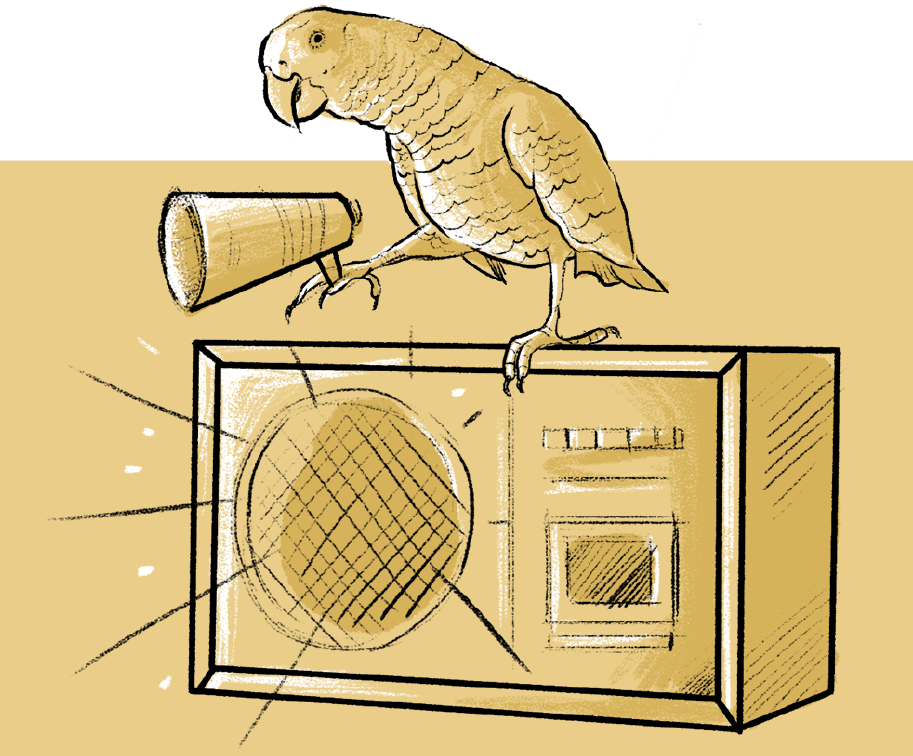You indies are all about experimentation. After all, no corporate overlord exists to dictate which products you sell or how you merchandise them. Or which processes you put in place. Or how you manage staff or market your brand. You have the freedom to be bold, to see for yourself what works and what does not. With that in mind, we asked the PETS+ Brain Squad to share experiments that have proven successful for their businesses. Try one, two or even all 20!

EXPERIMENT
Provide free 10-minute training session to daycare dog.
LEAD SCIENTIST: Lisa Cane, Wags Doggie Day Care and Training, Wenham, MA
HOW-TO: Choose team member to customize mini-training session for the dog. Work on sit or come, or address unwanted behavior. Repeat daily with different pups.
POSITIVE OUTCOMES: Helps new dogs integrate more quickly into pack. Impresses pet parents and encourages future visits. Gives staff opportunity to grow. “Hands-on practice is the best way for them to improve their dog handling and training skills,” Cane says. “We are professionals, and I want us to stand out from the increasingly crowded daycare market by offering added value to our customers.”
EXPERIMENT
Create a Facebook Live series.
LEAD SCIENTIST: Jeff Jensen and Matt Braselton, Four Muddy Paws, St. Louis, MO
HOW-TO: Decide on topic and repeat weekly or monthly. The co-owners do “In the Kitchen With Four Muddy Paws,” which features interviews with brand partners about their food and general pet nutrition.
POSITIVE OUTCOMES: The setting, their home kitchen, personalizes the business. Facebook Live videos have better organic reach than regular. Series promotes higher-quality products. Jensen says, “Our ‘In the Kitchen’ videos have helped to share more about why moving toward a more natural diet is important and various ways [customers] can incorporate products for a nutritional boost, even if they’re not quite ready to change their diet.”

EXPERIMENT
Thank employees and customers for their support.
LEAD SCIENTIST: James Henline, Asheville Pet Supply, Asheville, NC
HOW-TO: Hand out gift cards and praise during staff meeting. Thank customers via video on social media.
POSITIVE OUTCOMES: Higher employee morale. “I gave each staff member a $10 gift card to a local coffee shop. I emphasized their importance to the success of our business, as they are the ones who handle our customers every day. After the meeting, I actually had employees in tears because I said that I cared about them. I’ve had some volunteer to come in when the store was extra-busy or ask if I needed them to stay late to help out. They were just really happy to know that someone recognized the work that they were putting in and appreciated them.” Increased sales. “I posted [the video] on Thanksgiving day, and we had our biggest Black Friday and Small Business Saturday ever. Since then, our daily sales have increased and the store is noticeably busier. I still have people coming in and telling me how much they appreciated what I said and for us being here for them.”
EXPERIMENT
Group chat with staff.
LEAD SCIENTIST: Missie Mattei, Miss Doolittles Pet Spa & Boutique, Pottsville, PA
HOW-TO: Send need-to-knows and praise. Encourage the same from employees, as well as messages just for fun.
POSITIVE OUTCOMES: Improved communication and employee morale. Mattei says of their Facebook group chats, “At work, we are often too busy, or work different schedules, to share important or uplifting messages. This is an easy way to pass info. We’ve had a couple of people who came from difficult work environments, and this has helped us be inclusive, admit our faults, congratulate our achievements, share ideas, and find humor in each other. Everyone seems to like the easy interchanges, but if they don’t want to take part, that’s OK too.”
EXPERIMENT
Discount daycare rate for grooming clients.
LEAD SCIENTIST: Marcia E. Cram, Just Fur Pets, Springfield, VA
HOW-TO: Offer as add-on or part of package.
POSITIVE OUTCOMES: Increases revenue and client satisfaction. “Pet parents like that their dogs get to romp with their fur friends,” Cram says.
EXPERIMENT
Create to-do list and script for grooming check-in procedure.
LEAD SCIENTIST: Nanci Sien, Pampered Paws, Owings, MD
HOW-TO: Document every step taken during check-in, from greeting client and getting pet information to providing a pick-up estimate and asking if there are any questions. Write talking points for groomers that cover the steps.
POSITIVE OUTCOMES: Improved client satisfaction and retention, and increased add-on sales. “Clients have told us they felt more comfortable leaving their pets with us after getting to know the groomer at check-in and having their concerns addressed,” Sien says. “Talking to the client about their pet in-depth allows our groomers to upsell add-on services by telling the client how these services can solve specific issues. Being specific about everything that will be done during the groom as well as giving projected pick-up times have prevented misunderstandings and increased customer satisfaction.”

EXPERIMENT
Designate a sports jersey day of the week.
LEAD SCIENTIST: Diane Marcin, Benny’s Pet Depot, Mechanicsburg, PA
HOW-TO: Pick day and encourage employees to wear sports jerseys.
POSITIVE OUTCOMES: Boosts employee morale and creates fun atmosphere for staff and customers alike. Marcin says, “The customers love it! When a customer walks in wearing the same team as you are, the conversations begin about the game last week or the upcoming one. Every now and then you get a high-five.”
EXPERIMENT
Get a liquor license.
LEAD SCIENTIST: Carol Will, Lola & Penelope’s, Clayton, MO
HOW-TO: Contact state alcohol beverage control agency. Licenses vary by whether selling, serving or both, and whether wine and beer or also hard liquor. Will advises, “If you go for it, call and talk to the leadership in your city before you submit your application. Explain your vision, and ask about any concerns. I had to present to the board of aldermen for approval. It went well since they knew the city supported our plan.”
POSITIVE OUTCOMES: Further differentiates your store from other retailers. Supports pet-related breweries and wineries. Among others, Lola & Penelope’s carries local craft beers Urban Chestnut Brewing Company’s Underdog and 2nd Shift Brewing’s Cat Spit Stout.

EXPERIMENT
Promote big events with a radio ad campaign.
LEAD SCIENTIST: Keefer Dickerson, Nashville Pet Products, Nashville, TN
HOW-TO: Poll your staff and customers on which stations they listen to. Tune into top three, noting personalities, music and commercials. If your business would be a good fit, and you would play them in your store, contact each station. Ask about audience to determine if demographics match your customer base. Learn their ad creation process. “The radio station will take care of writing the ad copy, and producing the spot to your satisfaction,” Dickerson says. Negotiate, he adds. “Radio rates can be flexible. Don’t be afraid to ask for discounts or add-ons.” Choose the best offer.
POSITIVE OUTCOMES: Boosts visibility and sales. Nashville Pet Products ran two radio campaigns in 2018. Ads for Customer Appreciation Day helped increase sales by 52 percent over previous year’s event. Ads for the annual holiday sale brought in 25 percent increase year over year.
EXPERIMENT
Give welcome boxes to new grooming customers.
LEAD SCIENTIST: Kris Minkle, The Whole Pet, Fort Smith, AR
HOW-TO: Ask food, treat and grooming product manufacturers to provide samples and coupons that can be regular items for box. Add to it samples specific to client, such as a sensitive-formula shampoo for pet with skin issues, as well as low-cost items: a roll of poop bags or a small toy. Include nutritional and grooming literature, plus menu of services. Place in box branded with your logo. Minkle says, “If we have time, we also take a photo of their freshly groomed dog and include that as well.” Cost: around $3.
POSITIVE OUTCOMES: Improves customer satisfaction. “We noticed a distinct rise in new customers leaving feedback, once we started the boxes. It seems like people are much more likely to give feedback online or ratings if they’ve gotten something for free.” Increases sales and improves customer retention. “A woman with a Standard Poodle named Timber came in a few days after she had her dog groomed, and she wanted to try the foods included in the box, saying Timber ‘loved them.’ She has turned into a very regular food and grooming customer.”
EXPERIMENT
Get up two hours before leaving for work to practice self-care.
LEAD SCIENTIST: Wendy Megyese, Muttigans, Emerald Isle, NC
HOW-TO: Set your alarm and don’t hit snooze. Megyese says, “I have been getting up earlier and investing that quiet morning time in myself by reading, meditating and journaling.”
POSITIVE OUTCOMES: Start day with clarity and calm, be less reactive at work. “In the past, if events did not unfold the way I had planned for them to, I would work myself into a mental frenzy and somehow convince myself that all my planning was futile because I would always be at the mercy of circumstances I could not control,” she says, offering this example:
“Our town’s Christmas parade was cancelled because of a severe storm. Our store is located on the parade route. It is historically one of our strongest sales days of the year. The call to cancel was made just two hours before the event, so I already had extra staff on hand as well as increased inventory.
“Rather than getting upset, I chose to see it as something that would become a future conversation starter. While my morning routine did not change the negative economic impact the storm caused, I was able to see that there was nothing I could have done differently that would have changed the outcome. Instead of fretting about what I could not control, I decided a rainy day with more than enough staff would be the perfect time to take an afternoon off and spend it having fun with my granddaughter.”
EXPERIMENT
Move from item-pricing to peg- and shelf-pricing.
LEAD SCIENTIST: Duane Poland, Bones-n-Scones of Palm Springs, Palm Springs, CA
HOW-TO: Instead of placing price tags on each item, create peg and shelf tags for pricing.
POSITIVE OUTCOMES: Speeds up restocking, as products can go from box to shelf. Provides clarity. Poland says, “Many of our customers simply didn’t look at the back of the package.” Boosts sales. “We have also seen an extra bump in sales of our treats we have priced up front, as there is no longer a ‘mystery’ as to the price!” Saves time. “I believe things can always be better, easier and faster. Any time saved, no matter how small, can really add up and frees staff to better serve our customers and companion animals!
EXPERIMENT
Touch things only once.
LEAD SCIENTIST: Kara Holland, Pittsboro Pet Supply, Pittsboro, NC
HOW-TO: Apply this direction to any task you can. Holland explains, “I teach this to our staff members the first day they start working at our store. Instead of handing pamphlets from sales reps to me, ask where they go and always place them there. It saves them from moving it multiple times.”
POSITIVE OUTCOMES: “Touching things once saves us so much time and empowers our staff to make decisions on their own. The same issue or same item shouldn’t have to be reviewed over and over again, unless it is an item that deserves to be!”
EXPERIMENT
Let calls go to voicemail when grooming pets.
LEAD SCIENTIST: Rachel Malmfeldt, Pampered Pups Grooming, Joliet, IL
HOW-TO: Record voicemail message that lets customers know you have a dog on the table and will return their call in a set amount of time. Instruct employees to not interrupt their work to take calls.
POSITIVE OUTCOMES: Reduces stress and increases safety. “ This has created a more relaxed atmosphere for the groomers and pets,” Malmfeldt says.

EXPERIMENT
Have new employees shadow a top salesperson.
LEAD SCIENTIST: Terri Ellen, Nature’s Pet Market, Salem, OR
HOW-TO: Schedule so that new employees can observe during their first two weeks. Pair them with top team members.
POSITIVE OUTCOMES: New team members learn best practices on the job, while those they shadow grow as leaders. Increased sales, higher employee retention. “New employees can quickly learn to run a register and check out customers, but the foods and nutrition for pets are quite a bit more difficult or complicated,” Ellen says. For example, she adds, “It’s wonderful when an employee is standing there listening to me help that customer solve an itchy dog’s problems.”
EXPERIMENT
Delegate ordering to a proven manager.
LEAD SCIENTIST: Paul Lewis, Birds Unlimited, Webster, NY
HOW-TO: Choose a manager who knows the store and its customers well, then give him trial-run order. Lewis shares, “Sometimes staff have a different perspective on what our customers like and don’t like. I don’t talk to everyone who comes through the door, and sometimes customers are more comfortable talking with the staff.”
POSITIVE OUTCOMES: Saves time, freshens stock and empowers the manager. “It has led to bringing in new products I’d never try myself,” he says, that ended up being a hit with customers.
EXPERIMENT
Reduce stress by watching less TV news.
LEAD SCIENTIST: Julie Husa, D Best Pet Sitting, Dallas, TX
HOW-TO: Subscribe to your local newspaper. Watch only one local news show daily or pick from online highlights. Avoid 24-hour news channels.
POSITIVE OUTCOMES: Turning off bickering politicians and pundits helps keep cortisol production in check and leads to a healthier self, at home and work.
EXPERIMENT
Find out if there’s an app for that.
LEAD SCIENTIST: Debbie Brookham, Furry Friends Inc., Colorado Springs, CO
HOW-TO: Visit app store of choice to see what tools could improve a specific business process. Or just explore store to see what’s new and could help. Download to evaluate, then ask employees to do the same before purchasing or implementing app.
POSITIVE OUTCOMES: Saves time and money, improves workflow and communication. Brookham uses Trello for all of the above. “Trello is a great communication tool for us. It is separated in ‘boards’ so you can easily label a column a different name, such as ‘Customer Requests.’ When I order product, I’m able to go to one location. The team member includes the client’s name and contact info, along with their initials and date. I can see to order it, and then when it comes in we go back to Trello, contact the customer and write any additional notes. Once the special order is picked up, we delete the note from the Trello board. With so many shifting gears in a small business, it’s best to stay focused and organized.”
EXPERIMENT
Create employee bonding opportunities outside of work.
LEAD SCIENTIST: Caitlin Jones, Nooga Paws, Chattanooga, TN
HOW-TO: With employee input, plan outing. Encourage non-work talk. Pick up the tab. Jones took her 12 employees to dinner and a haunted house in October.
POSITIVE OUTCOMES: Improved teamwork. “Getting to know each other on a deeper level helps us work together during our shifts,” she says.

EXPERIMENT
Reduce daycare rates on traditionally slow days.
LEAD SCIENTIST: Angela Pantalone, Wag Central, Stratford, CT
HOW-TO: Determine which day, or days, of week, have significantly lower bookings and how much you can afford to discount and still be profitable.
POSITIVE OUTCOMES: Increased bookings. Pantalone discounts daycare from $38 to $30 on Mondays and Tuesdays, and has doubled her bookings on those days. “What a fun pat on the back that has been!” she says.